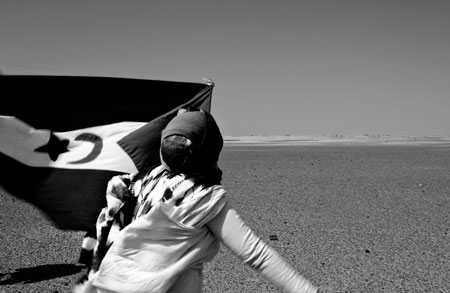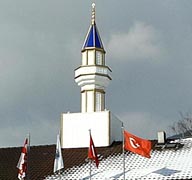Source: The New Internationalist
 |
|
Photo by: Ana Areanas
|
While the world is commemorating the fall of the Berlin Wall, another less well-known wall that separates a nation and its people still stands tall. At 1,553 miles long, the wall that divides Western Sahara is 12 times longer than the Berlin Wall and, having stood for 29 years, is now a year older than the Berlin Wall was when it was toppled.
Known as ‘the Berm’, the wall was constructed by the Moroccans from sand and stone to keep the Polisario Front, the Western Sahara liberation movement, out of the territory and prevent the 165,000 Saharawi refugees from returning to their land. Standing at around 3 metres in height, the wall runs through the desert and is fortified with barbed-wire fencing, artillery posts and one of the highest densities of land mines in the world.
Like the wall that separates the Israeli and Palestinian populations in the West Bank, the Berm has become a potent symbol of the occupation and focus for protests. Last April 19-year-old Ibrahim Hussein Leibeit was taking part in one of the frequent marches to the wall organized by Saharawis living in the refugee camps. In a symbolic gesture, Ibrahim was attempting to get close enough to the wall to throw a pebble to the other side when he trod on a land mine. He lost his right leg below the knee and in the following months has become something of a hero to the Saharawi cause. read more






